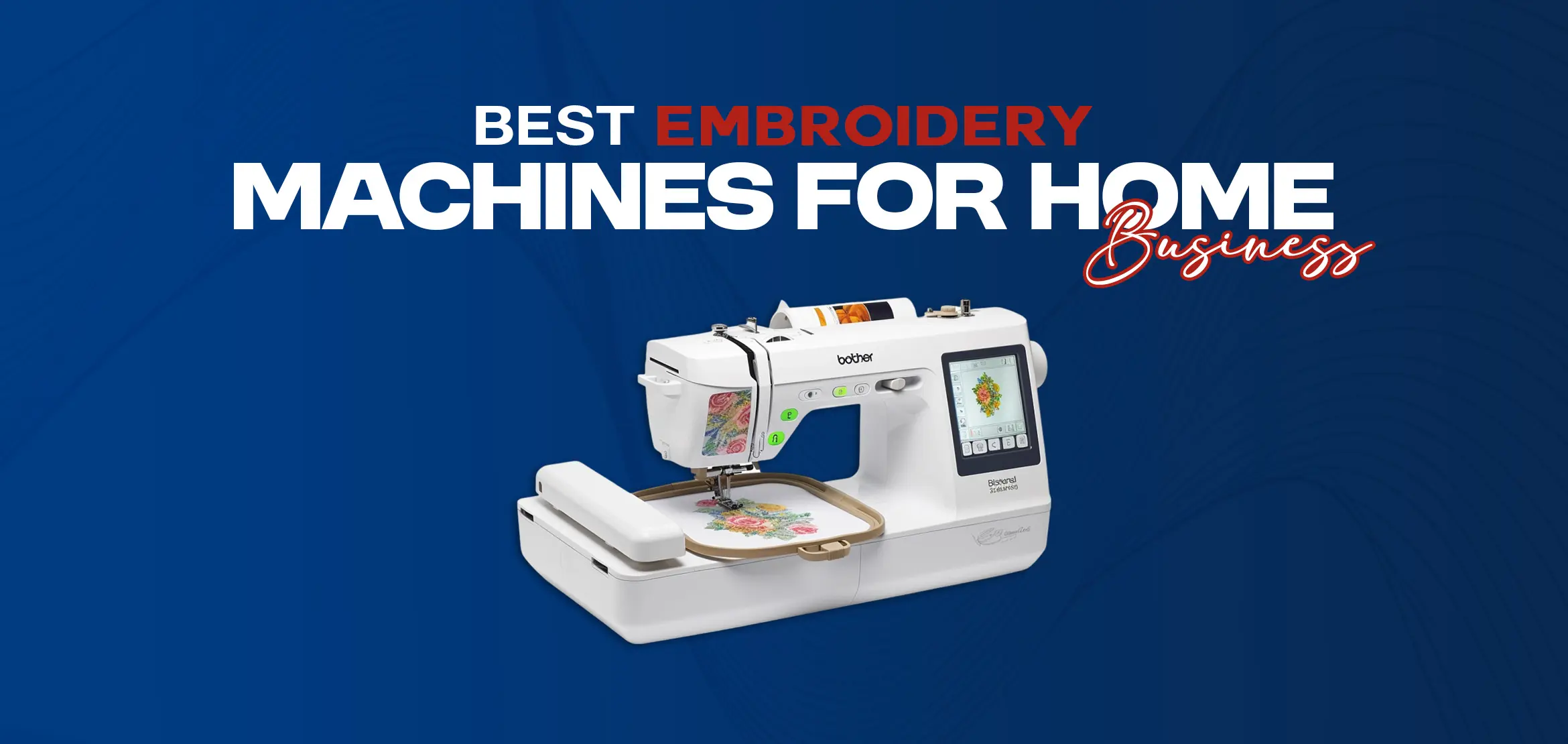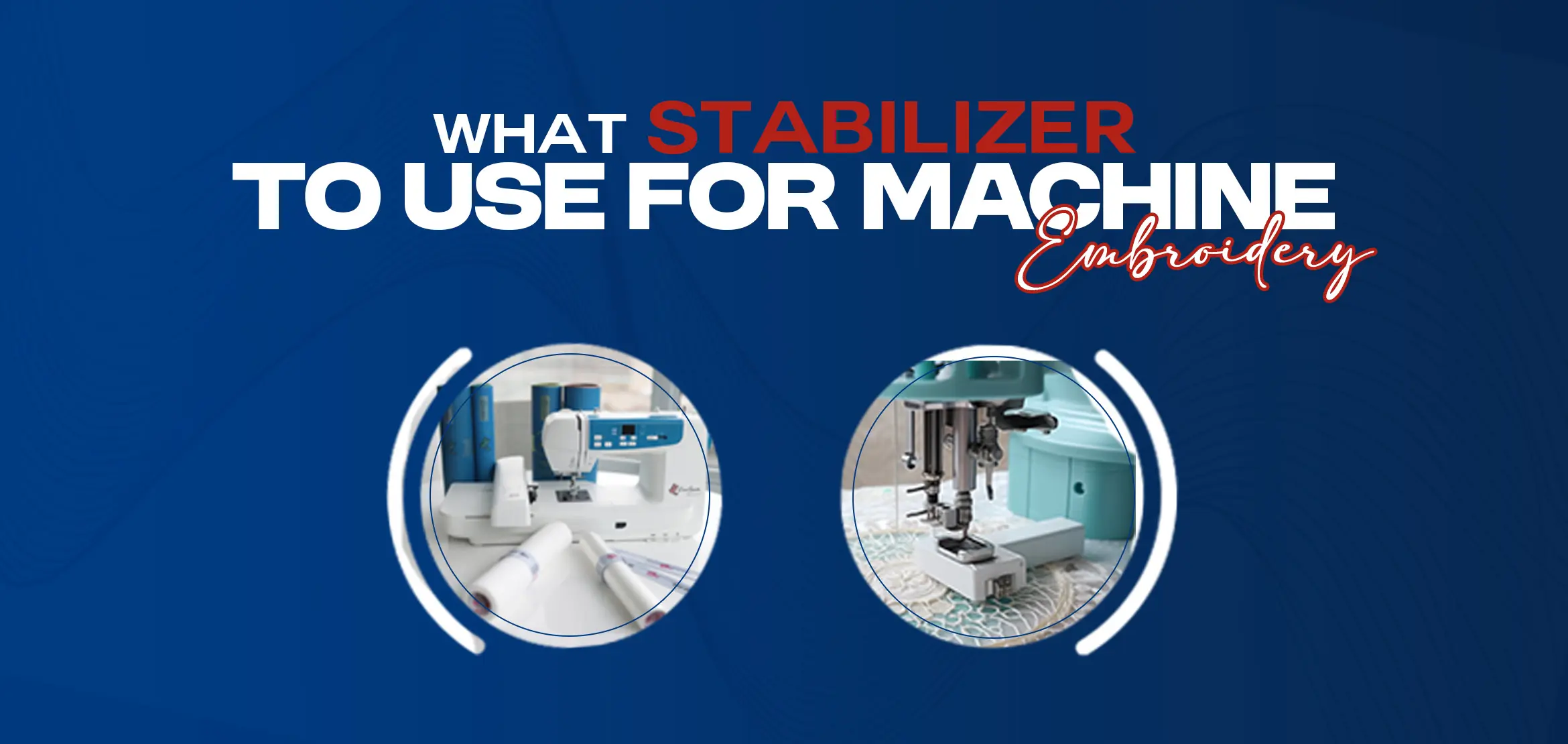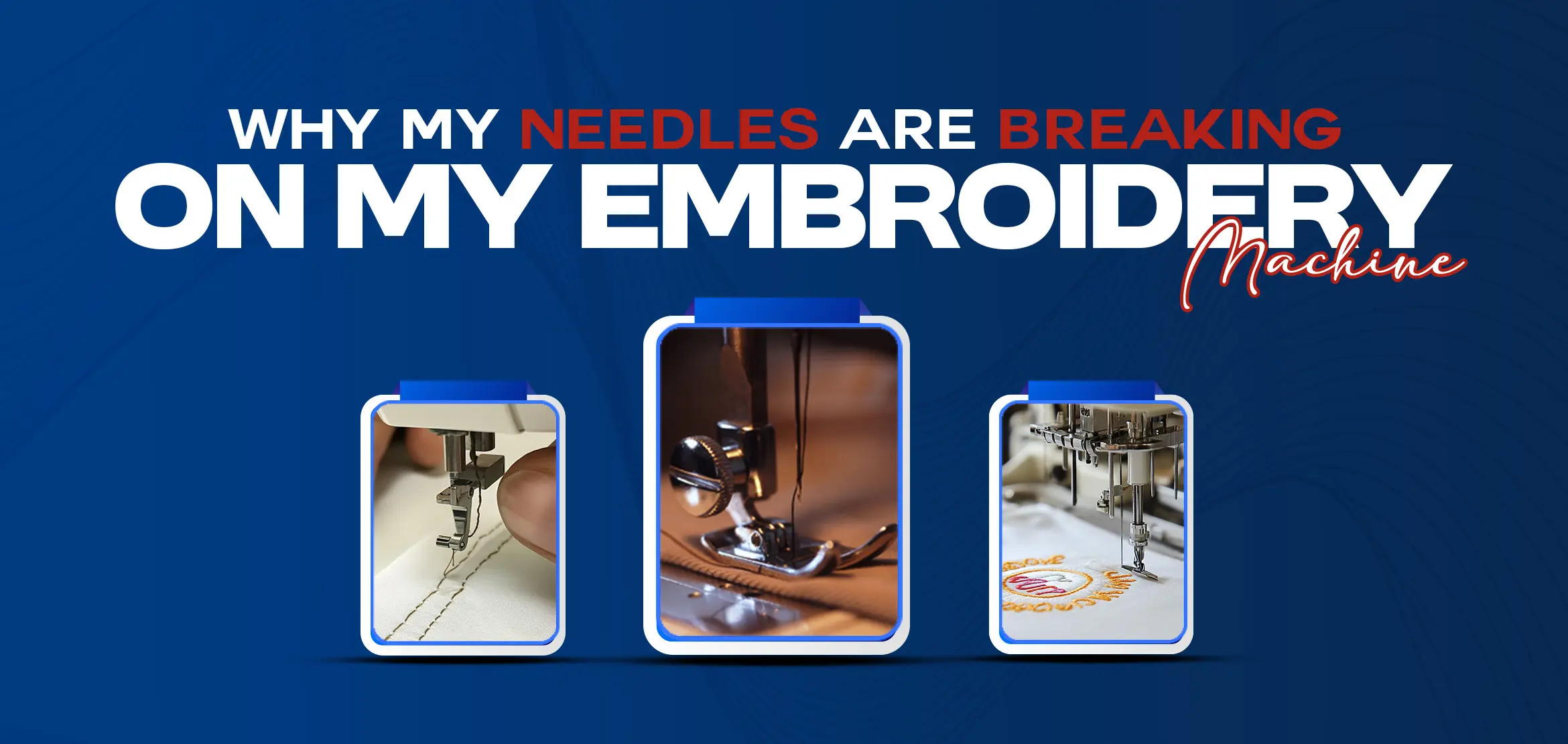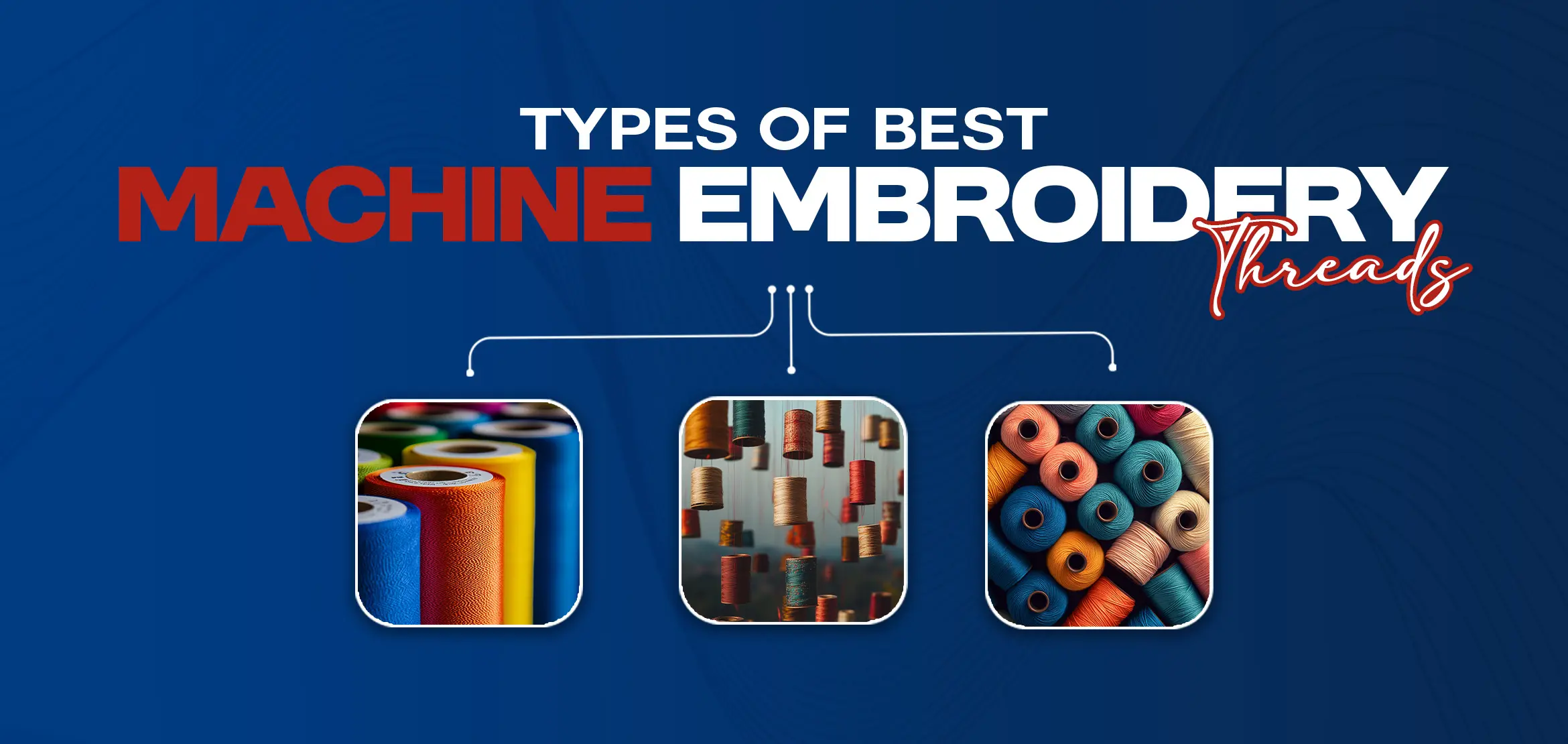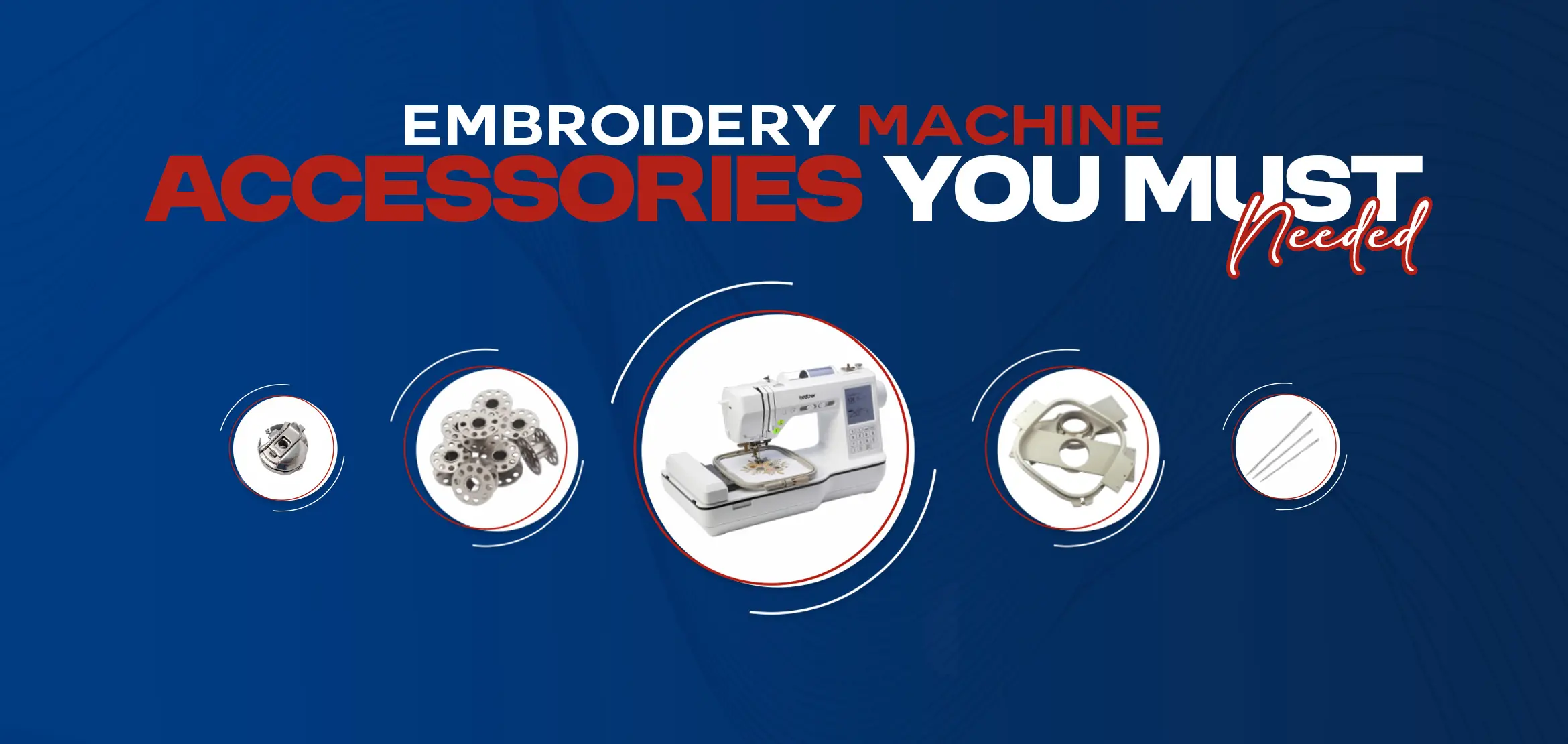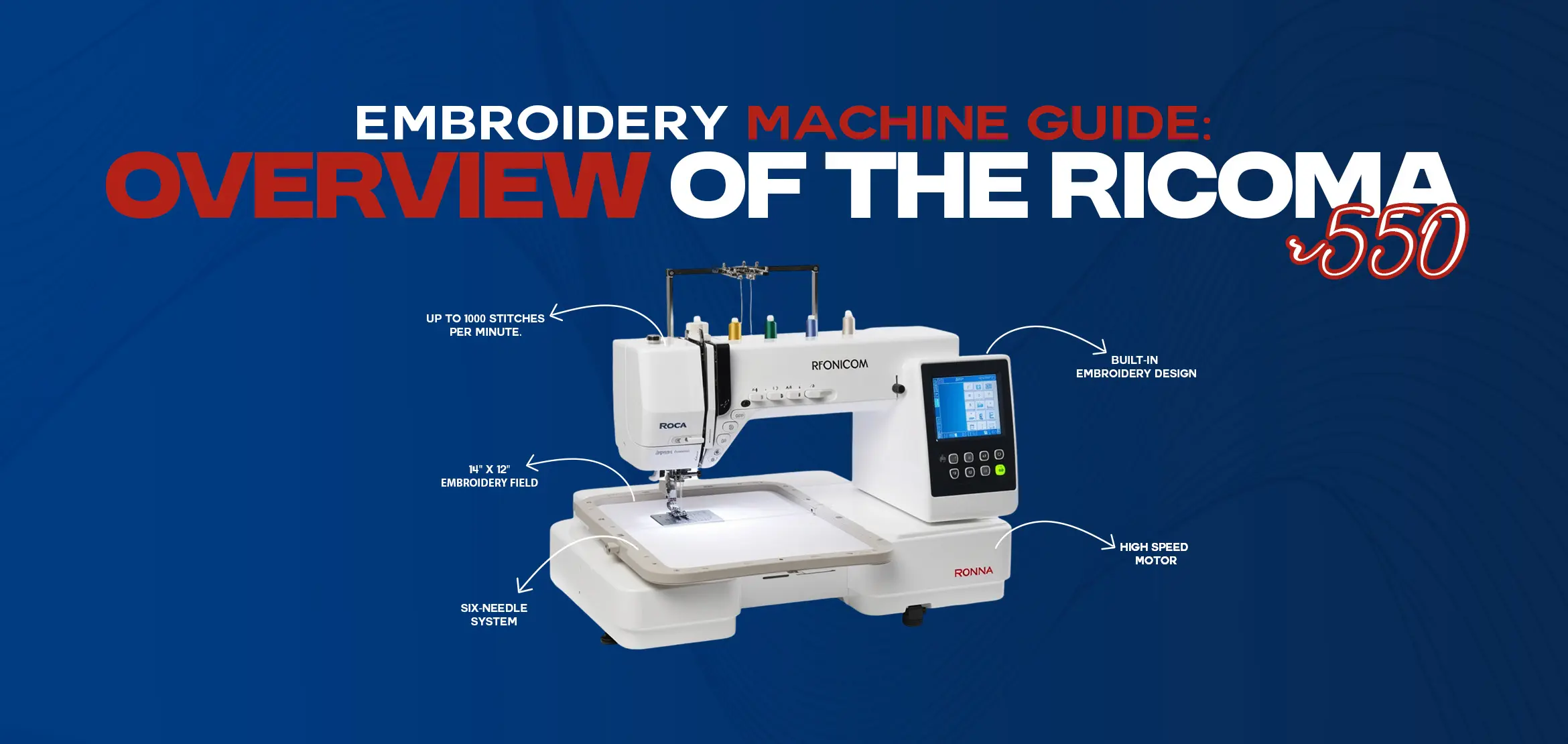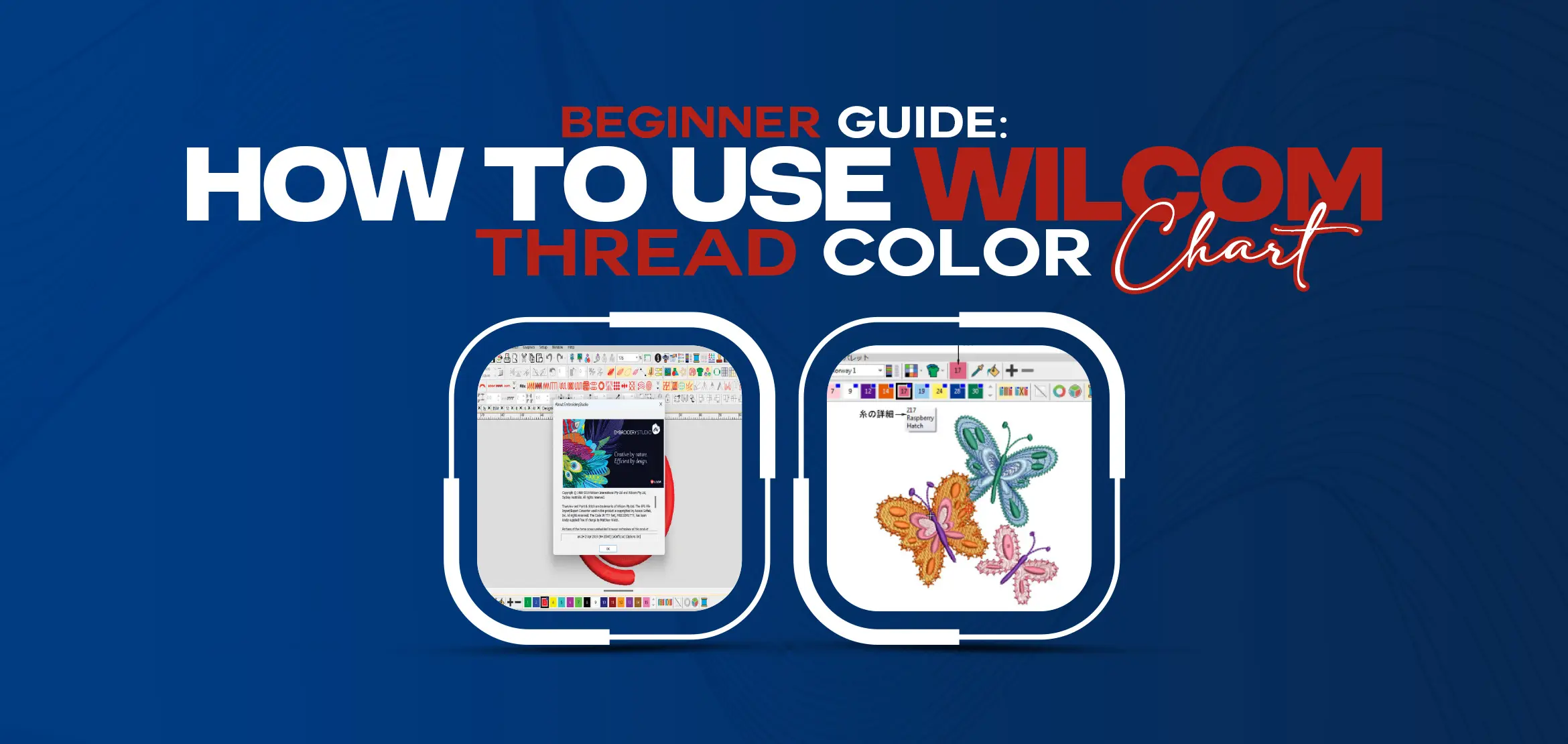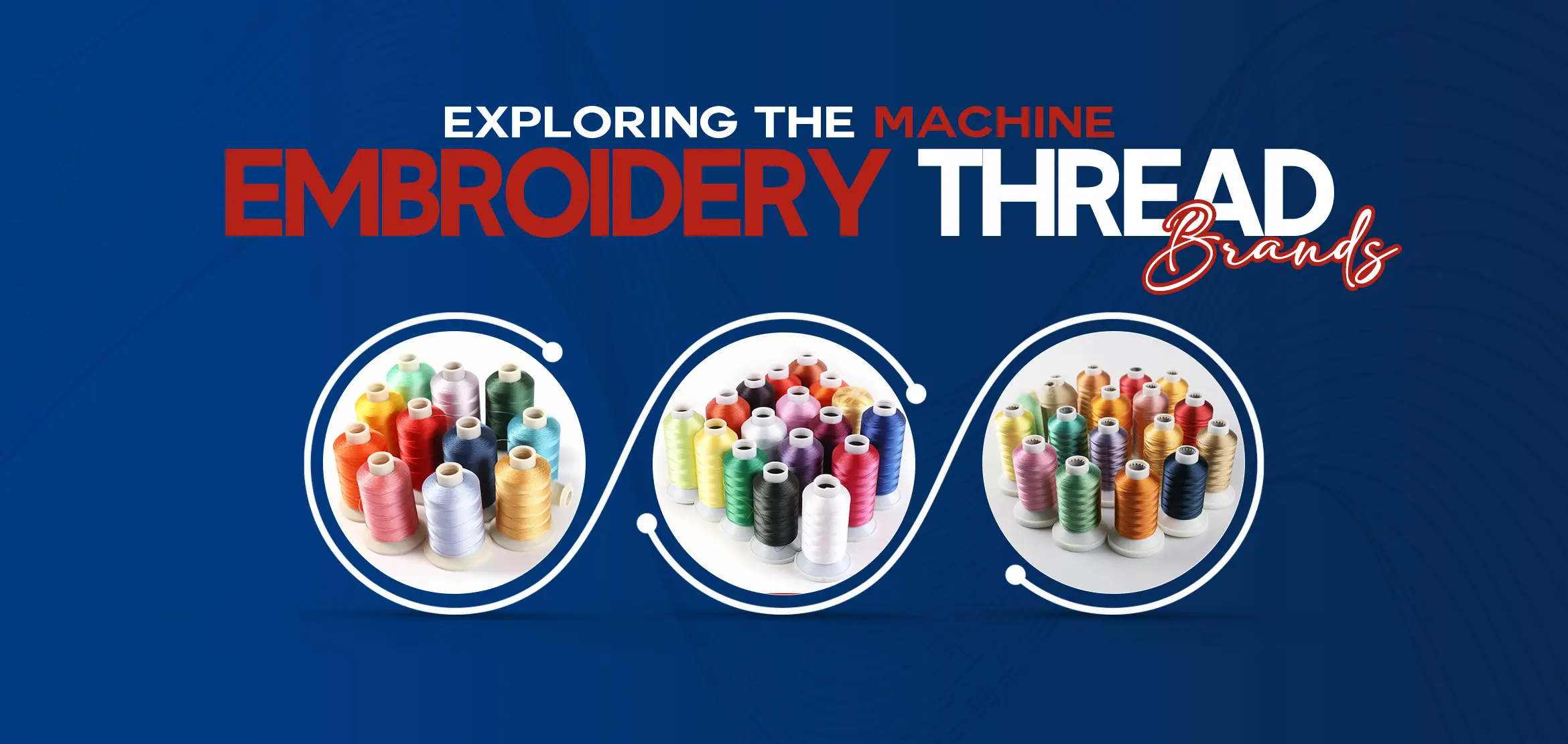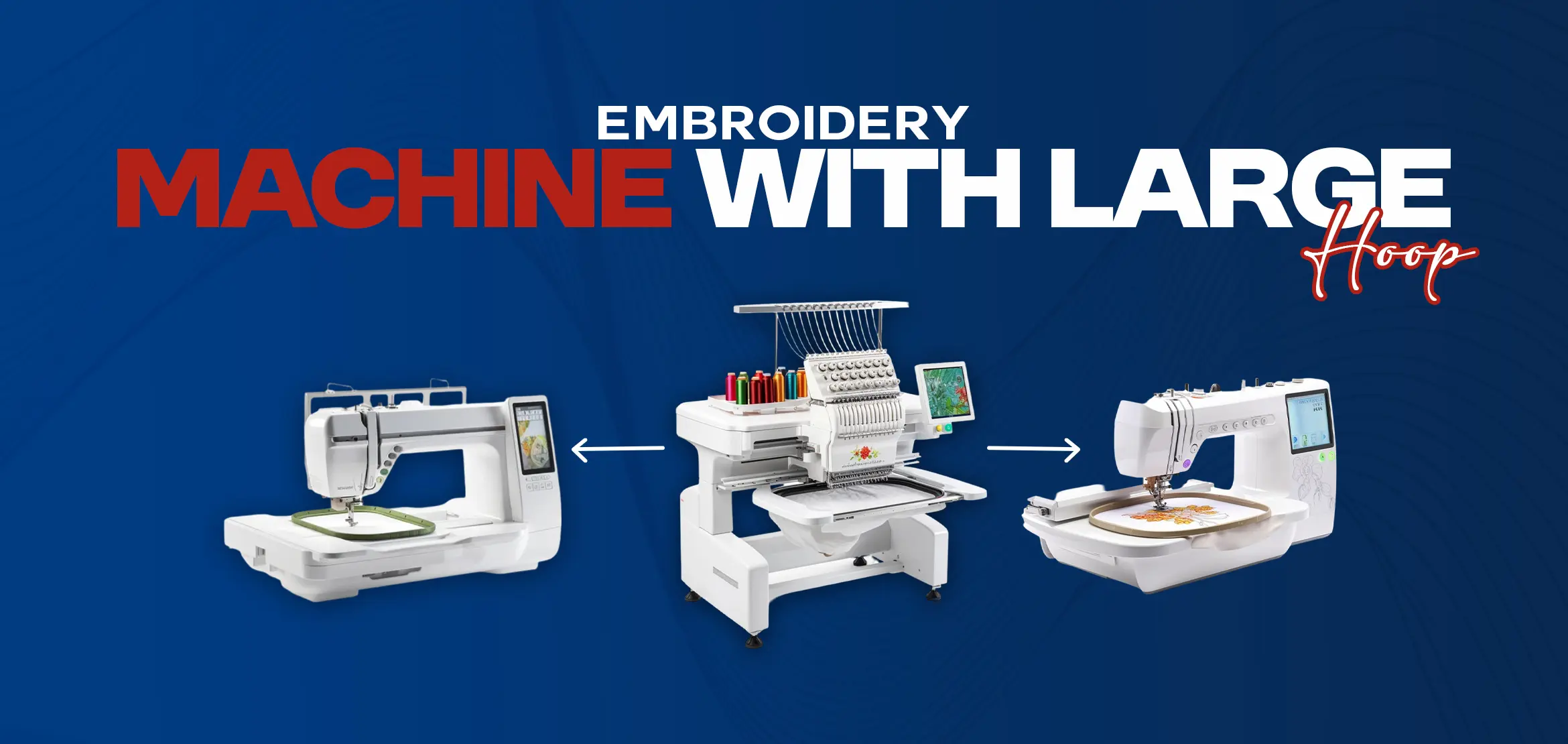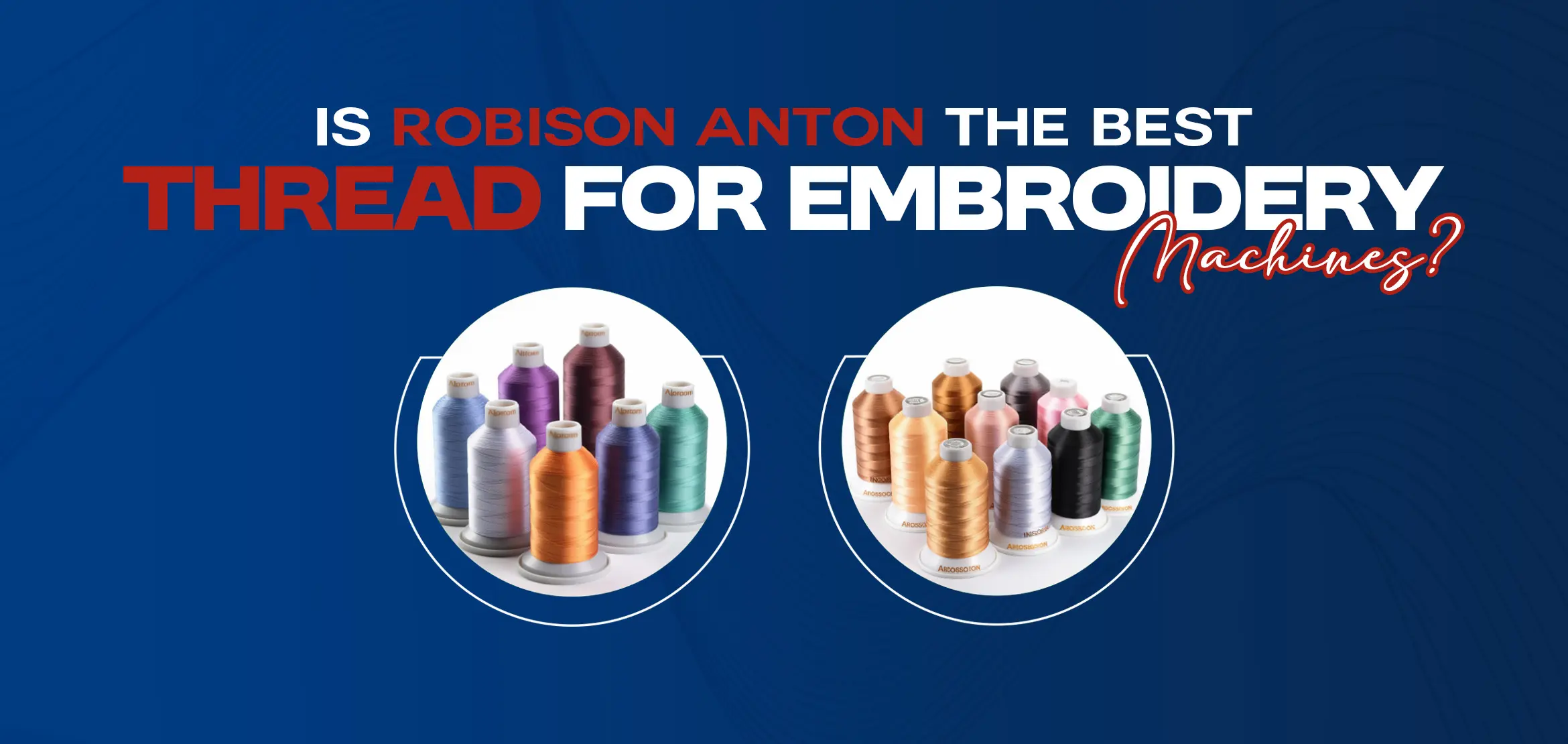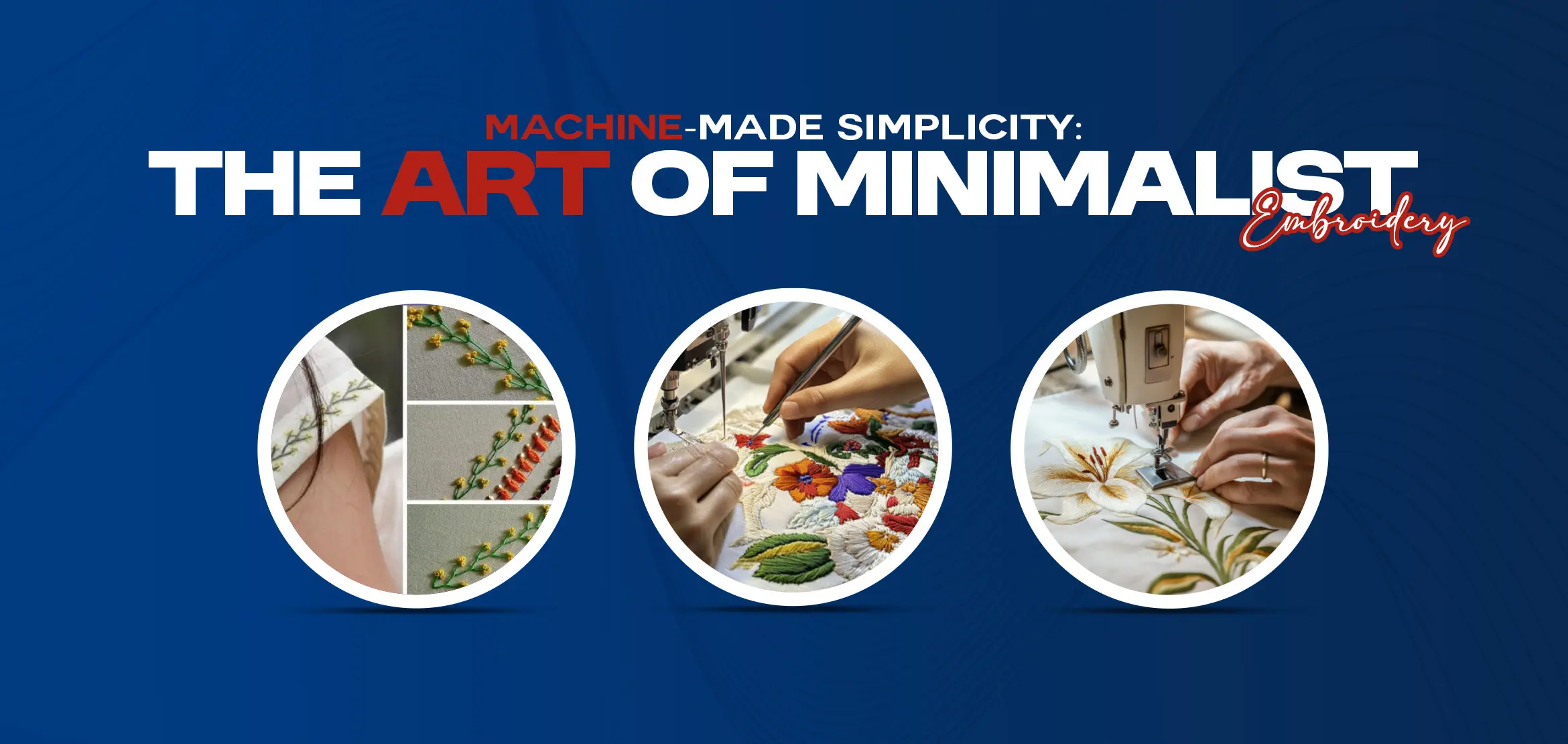
Machine-Made Simplicity: The Art of Minimalist Embroidery
Table Of Content
- Understanding the Minimalist Embroidery
- Getting Started with Machine Embroidery
- Machine Embroidery Techniques for Minimalist Designs
- Essential Elements of Minimalist Embroidery
- Simple & Clean Designs
- Limited Color Palette
- Geometric and Abstract Forms
- Small-Scale Projects
- Focus on Texture
- Examples of Minimalist Embroidery Designs
- Botanical Motifs
- Abstract Shapes
- Small Objects
- Why People Love Minimalist Embroidery
- Elegance
- Quick and Simple
- Versatility
- Famous Applications for Minimalist Embroidery
- Fashion
- Home Décor
- Branding
- Preference for Minimalist Embroidery
- Hand Embroidery
- Machine Embroidery
- Conclusion
Minimalist embroidery is a strong style that promotes simplicity, clean lines, and impactful designs. It is all about creating artwork with a stripped-down aesthetic that communicates importance. By employing a limited color palette and basic stitching techniques, it delivers a striking visual effect that captures attention. Adopt minimalist embroidery and discover how it can transform any space with its elegant and subtle presence. The trend towards minimalist fashion and interior design has fueled a corresponding interest in minimalist embroidery, as individuals seek to create personalized items that reflect this modern aesthetic. Consumers increasingly appreciate transparency and authenticity, qualities often embodied by the straightforward nature of minimalist design.
Understanding the Minimalist Embroidery
At its core, minimalist embroidery is about achieving maximum impact with minimal embellishment. Clean lines and subtle textures characterize it, often blending the simplicity of modern design with the intricate details of traditional embroidery. This approach operates on the principle of 'less is more,' where the absence of unnecessary ornamentation allows the fundamental elements of the design to stand out. The style can be likened to tattoo art's clean, visually sophisticated nature, often focusing on outlines and essential forms. It gets 'right to the point with just a few threads,' emphasizing tidy lines and basic shapes. Simple patterns, such as circles, lines, and small botanical elements, are frequently employed to create a clean and modern look without appearing overly busy. Minimalist designs often convey a sense of sophistication through delicate lines and a restricted colour palette, keeping you connected and in tune with the best design trends.
Getting Started with Machine Embroidery
Embarking on minimalist machine embroidery requires a few essential pieces of equipment. The core of this craft is the embroidery machine itself. Newbies can choose between embroidery-only machines, which are specifically designed for stitching embroidery designs, and combination sewing and embroidery machines, which offer both sewing and embroidery functionalities.
For those new to the craft, beginner-friendly models often come with built-in designs and helpful tutorials. It's worth noting that consulting with local sewing machine dealers can be incredibly beneficial. They can guide you in selecting the right machine, provide introductory classes, and, most importantly, make you feel supported in your new creative journey.
Embroidery hoops, another essential tool for machine embroidery, come in various sizes. These hoops play a crucial role in maintaining the fabric's tension during stitching, preventing the fabric from shifting, puckering, and distorting the design. The hoop sizes you choose will define the maximum size of the embroidery design that can be stitched at once, offering flexibility in your design choices.
Machine Embroidery Techniques for Minimalist Designs
Several machine embroidery techniques are well-suited for creating simple, clean, minimalist designs. Single-line stitching, also known as a run stitch, is a fundamental technique that involves a continuous line of stitching.
This stitch is highly effective for creating outlines and adding delicate details, making it ideal for the "tidy lines" characteristic of minimalist embroidery. Its suitability for minimalist designs is a point of confidence for crafters.
The satin stitch, a technique that involves closely spaced zigzag stitches, is another valuable tool for minimalist embroidery. It is beneficial for creating smooth, slightly raised lines or filling small, narrow shapes, adding a unique texture to your minimalist designs.
While minimalist designs often avoid large-filled areas, the satin stitch can effectively emphasize borders or small elements, providing a smooth and glossy finish that's sure to excite. However, ensuring proper stitch density and width is essential to achieve clean results, and fragile satin stitches may present challenges.
The backstitch is another simple yet effective stitch for creating solid outlines in minimalist embroidery. It provides a more defined line than a running stitch, making it a good choice for clearly defining shapes.
Essential Elements of Minimalist Embroidery
Simple & Clean Designs
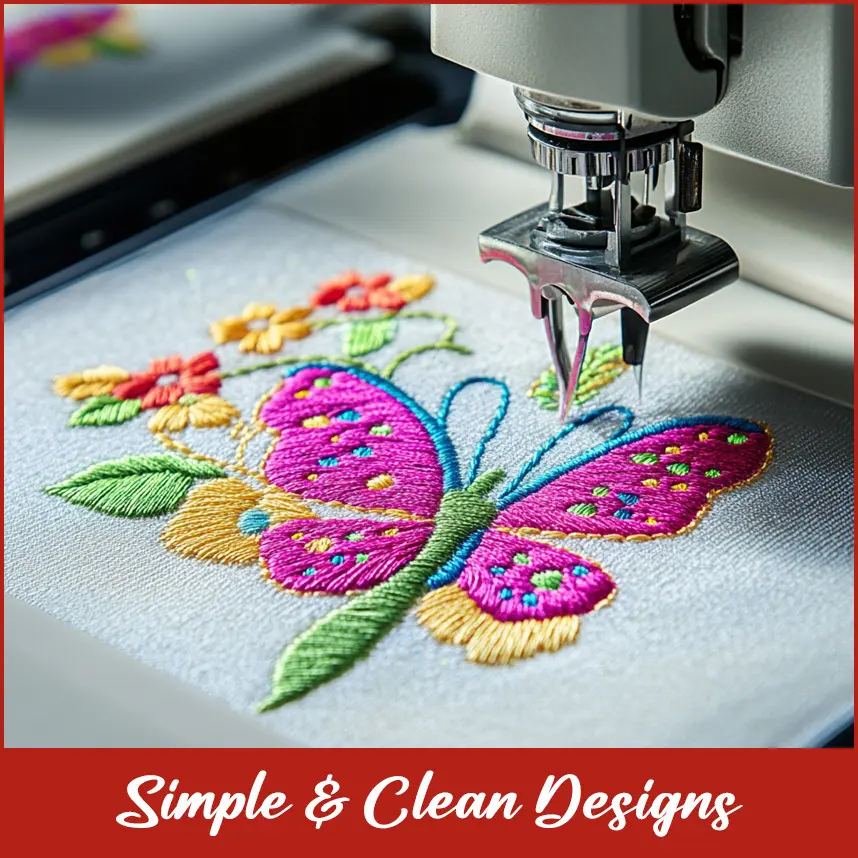
Simple, clean designs often dominate the minimalist embroidery landscape. You’ll find geometric shapes, conceptual patterns, and straightforward motifs—think a single flower, a delicate line, or a tiny animal. This emphasis on minimalism strips away unnecessary details, allowing the viewer to appreciate the purity of the design.
Limited Color Palette
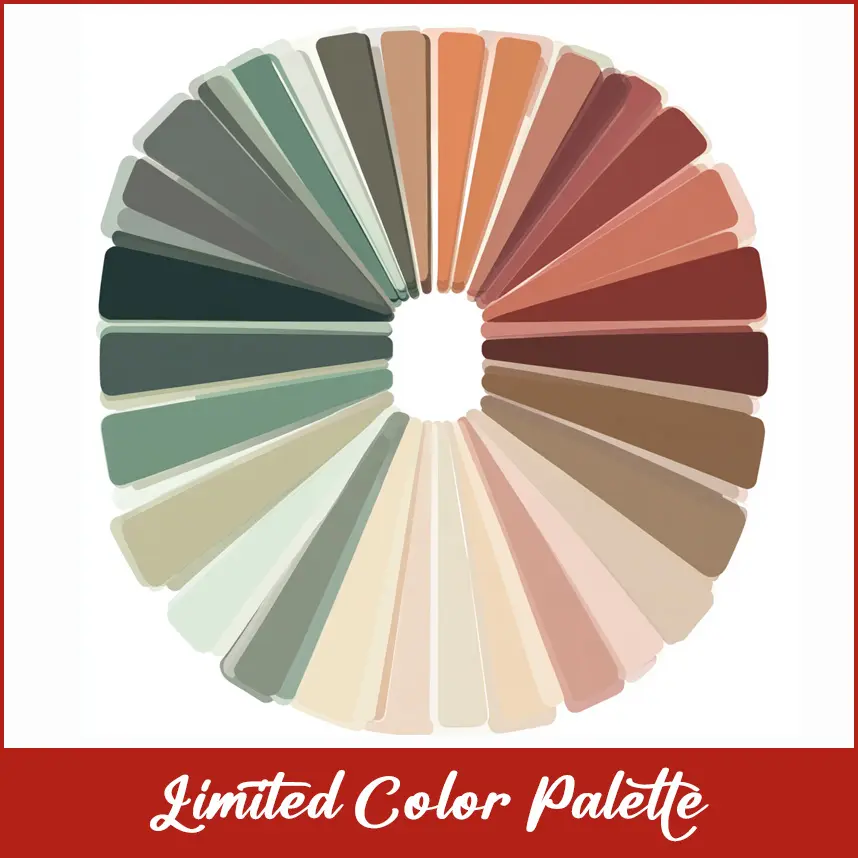
Another indication of this approach is the limited color palette. Many minimalist pieces utilize only one or two colors, sometimes even sticking to monochrome. This deliberate choice ensures that the stitches stand out and the simplicity of the design shines through rather than being lost in a sea of colors.
Use Negative Space
It plays a crucial role in minimalist embroidery as well. The areas left untouched by stitches are as significant as those filled, creating an open, airy feel. This intentional use of space allows the designs to breathe and invites a sense of calmness.
Geometric and Abstract Forms
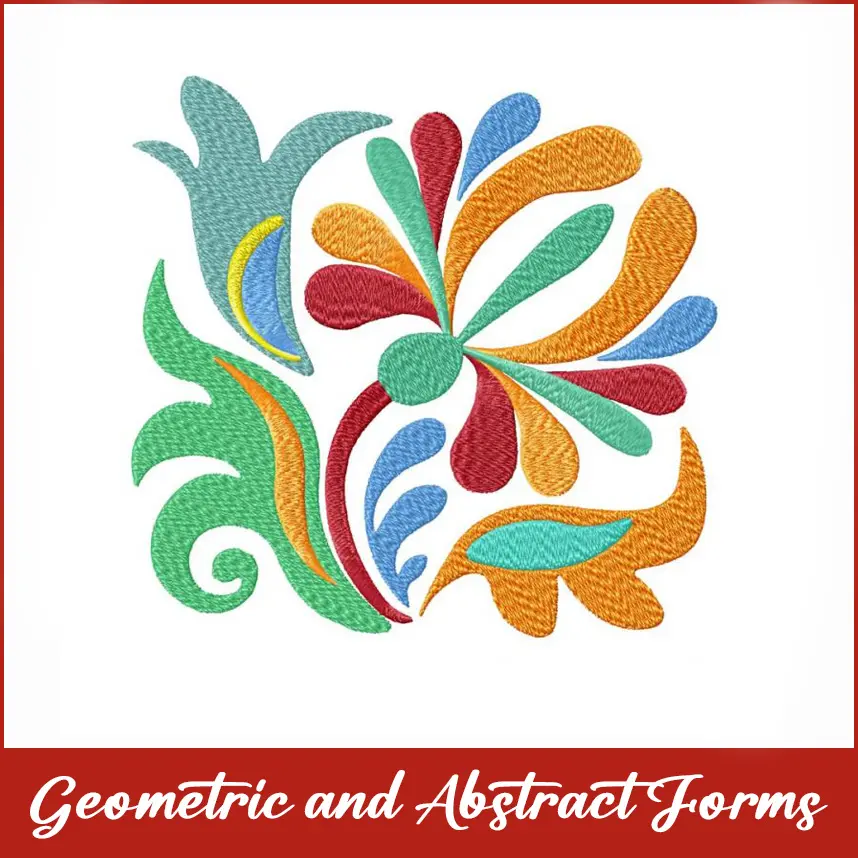
Geometric and abstract forms are commonly seen in this style. The straightforwardness of these shapes makes them easy to stitch and directs the focus on the overall form and structure rather than intricate details.
Small-Scale Projects
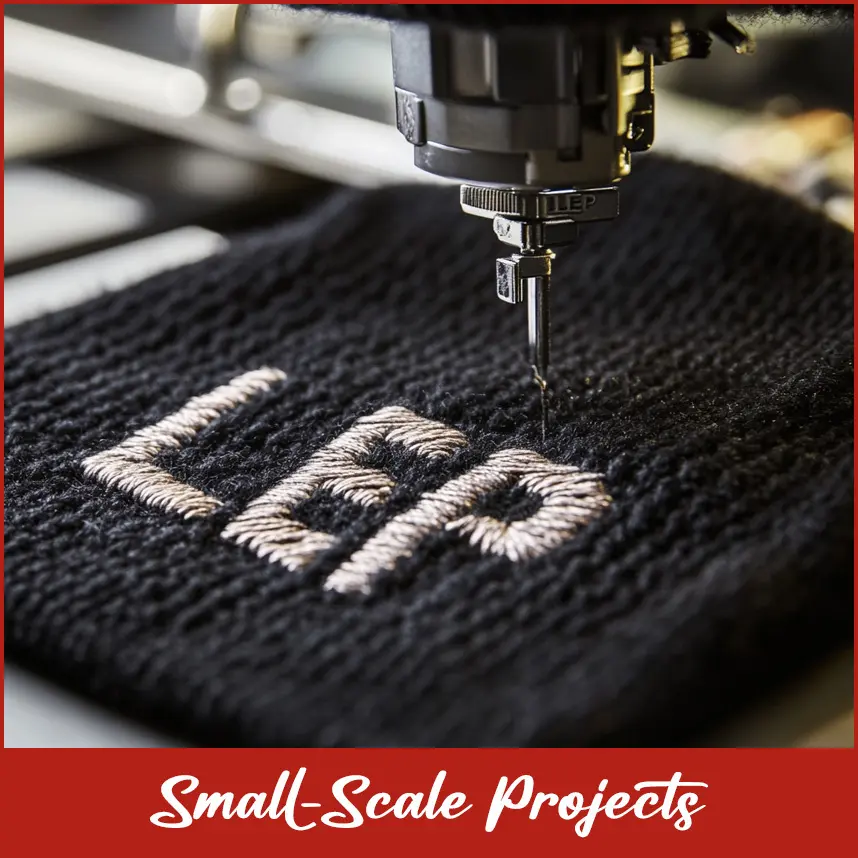
Many minimalist embroidery projects, such as tiny hoop art or patches, are crafted on a small scale. This manageable size highlights the modest beauty of the work and resonates with the minimalist ethos.
Focus on Texture
Finally, a focus on texture is a significant component. By highlighting the texture of the thread and its interaction with the fabric, minimalist embroidery elevates basic stitches—like running stitch, back stitch, or French knots.
Examples of Minimalist Embroidery Designs
Botanical Motifs
A simple design of a plant or flower created with a single thread color.
Abstract Shapes
Circular or unbent designs that do not follow standard patterns, resulting in a visually attractive look.
Small Objects
Simple representations of everyday items, such as a coffee cup, star, or mountain, depicted with very few lines or stitches.
Why People Love Minimalist Embroidery
Elegance
It’s subtle and sophisticated, often blending well with modern, minimalist interiors.
Quick and Simple
The relatively simple designs are perfect for beginners or those who prefer straightforward projects that don’t take too long.
Versatility
Minimalist embroidery can be incorporated into various types of projects, from wall art and clothing to home décor like pillowcases or napkins. Minimalist embroidery is all about finding beauty in simplicity, and it allows the embroiderer to focus more on form, texture, and color restraint than on complexity.
Famous Applications for Minimalist Embroidery
Fashion
Subtle, minimalist designs on attire like shirts, jackets, or hats.
Home Décor
Simple, elegant designs on pillowcases, towels, or wall art.
Branding
Logos or small, clean designs for businesses looking for a professional, minimalist look.
Preference for Minimalist Embroidery
Minimalist embroidery can be done by hand and machine, depending on the desired outcome and the artist's preference.
Hand Embroidery
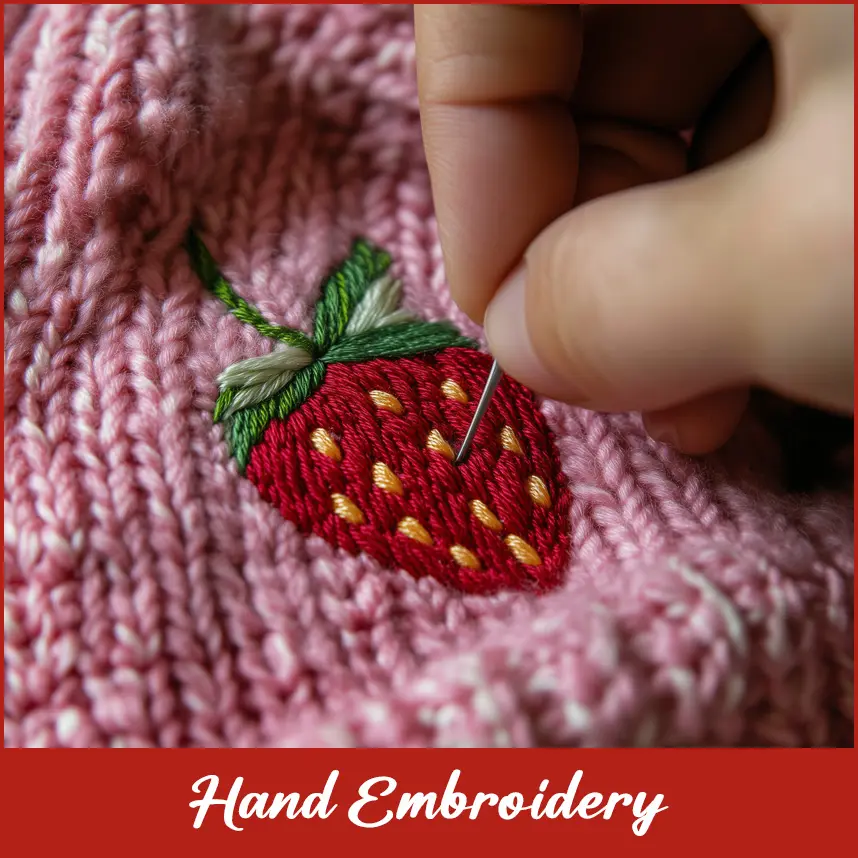
It involves using a needle and thread to create designs on fabric.
It can be more time-consuming than machine embroidery.
It is often seen as a more meditative and therapeutic craft.
Machine Embroidery
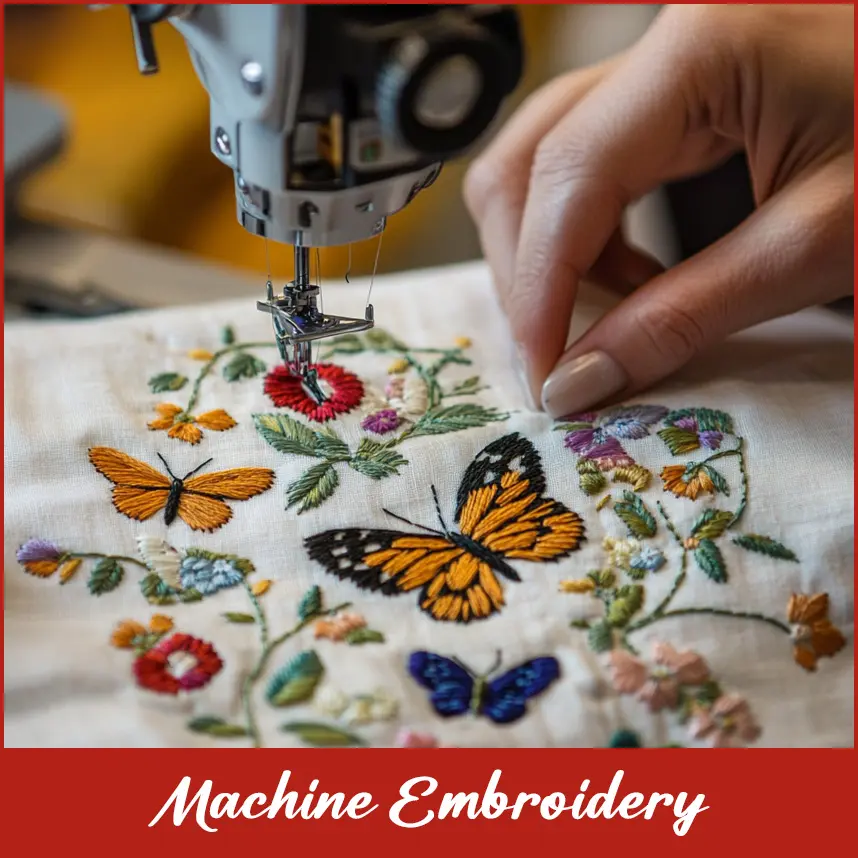
Utilizes an embroidery machine to create designs on fabric.
It can be faster and more efficient than hand embroidery, especially for large or complex projects.
Gives a more consistent and uniform look.
Machine embroidery can also create designs similar to hand embroidery but with a more uniform look.
Conclusion
Minimalist embroidery is a sophisticated and impactful art form that stresses simplicity, clean lines, and narrowed designs. Whether done by hand or machine, it allows for the creation of beautiful, subtle artwork that communicates a sense of elegance and sophistication.
While it concentrates on simple motifs, limited color palettes, negative space, and texture, minimalist embroidery is an adaptable technique that can enrich different applications, from home décor to fashion.
Whether you're a beginner or an experienced artist, the minimalist approach offers a therapeutic and innovative outlet for anyone desiring to explore the beauty in simplicity. Through both hand and machine methods, minimalist embroidery proves that less can be more.
